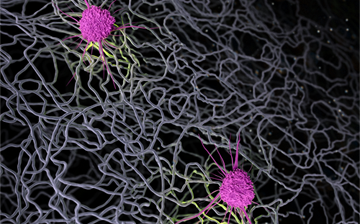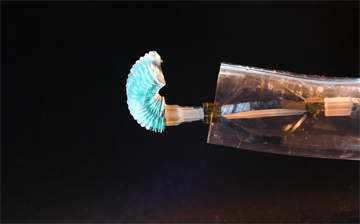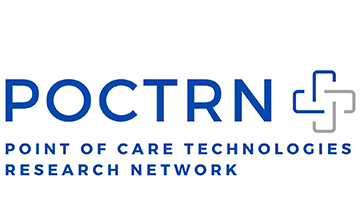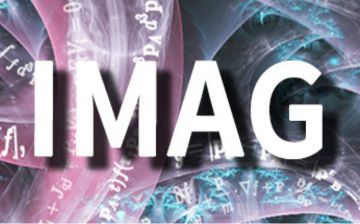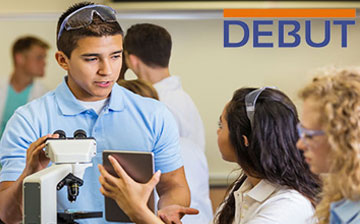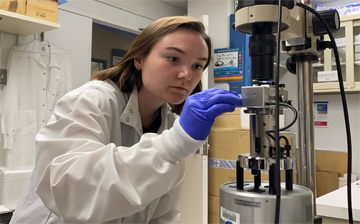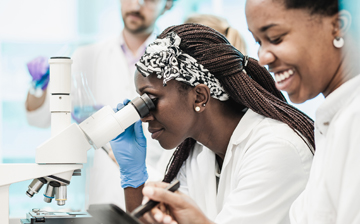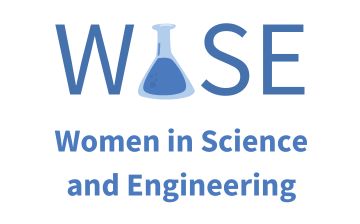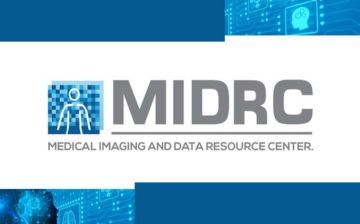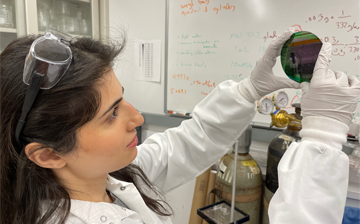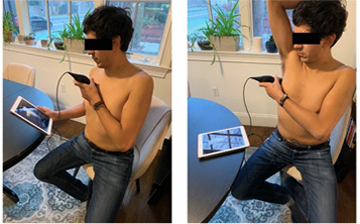Every February, we celebrate National Engineers Week. Explore some examples of innovative solutions to global health challenges created by NIBIB-funded biomedical engineering and imaging researchers.
Advancing Research Through Bioengineering
Introducing medical devices into our bodies can elicit a host of different immune responses. New research identifies which of these responses are harmful or helpful.
NIH-funded researchers have outlined a method to print biocompatible structures through thick, multi-layered tissues using focused ultrasound.
A beating heart makes for a formidable surgical arena, but a new robotic catheter could someday equip surgeons to operate in the cardiac environment with greater ease.
Advancing Research Through Collaborations
NIBIB is building on the success of the RADx Tech program to meet the needs of health challenges beyond the COVID-19 pandemic. With an established infrastructure, these programs can be utilized to quickly develop, validate, and achieve regulatory authorization for a range of health care problems.
NIBIB created POCTRN to drive the development of point-of-care technologies through collaborative efforts that merge scientific and technological capabilities with clinical need. Read about a recent conference and showcase that focused on partnerships and speeding technology translation.
IMAG seeks to grow and expand the field of multiscale modeling through the development and application of mechanistic mathematical and computational models. Founded in 2003, IMAG just celebrated its 20 year anniversary at their recent annual meeting - read more about it in the NIH Record.
Training the Next Generation
The annual Design by Biomedical Undergraduate Teams (DEBUT) Challenge invites college students to develop technology solutions to unmet needs in any area of health care.
Internships at NIBIB can open doors to new perspectives on research, career opportunities, and much more. Read about the undergraduate students who spent their 2023 summer in an NIBIB research lab.
The NIBIB ESTEEMED program supports educational activities that enhance diversity in biomedical research. Read about two young researchers who participated in this program.
Women in Engineering
NIBIB is committed to supporting women grantees and recognizes the impact that their research contributions have made in the NIBIB community and beyond. Learn more about the career journeys and research endeavors of a selection of these outstanding women.
This interview with Maryellen Giger, PhD, delves into the creation of the MIDRC imaging repository, how its data can be used to develop and evaluate AI algorithms, and ways that bias can be introduced—and potentially mitigated—in medical imaging models.
Paniz Sangsari works in the Biomedical Engineering and Physical Science (BEPS) shared resource at NIBIB where she supports scientists and clinicians across NIH with microfluidics devices — instruments that grant researchers precise control over the cellular environment.
Outreach and Education in Science
Learn about biomedical imaging

There are many types of medical imaging, like x-ray scans, CT, MRI, and ultrasound. But how do these technologies let clinicians “see” inside of our bodies? Take these Kahoot! quizzes to find out.
NIBIB's 60 seconds of science videos

Watch this collection of NIBIB videos to learn about different biomedical imaging technologies, the concepts behind tissue engineering, and the science behind quantum dots.
Read about the underlying principles of biomedical imaging and bioengineering technologies along with recent NIBIB-supported research that is helping to accelerate them.
Advancing Research Through Biomedical Imaging
One day, the ultrasound equipment that health care professionals use for essential diagnostic imaging may no longer be confined to the clinic, instead operated by patients in the comfort of their homes. New research marks a major step toward that future.
This new, wearable brain scanner is the first of its kind to accurately record the magnetic fields that are generated by human brain activity while the wearer is in motion. This advance could someday make it easier to conduct brain scans among those who can’t always remain still in conventional scanners.
To provide better diagnosis and treatment of chronic liver diseases, researchers are working to use MRI to detect and quantify liver fibrosis throughout the entire organ, which would enable earlier detection and the ability to monitor disease progression as well as the effects of treatment.


